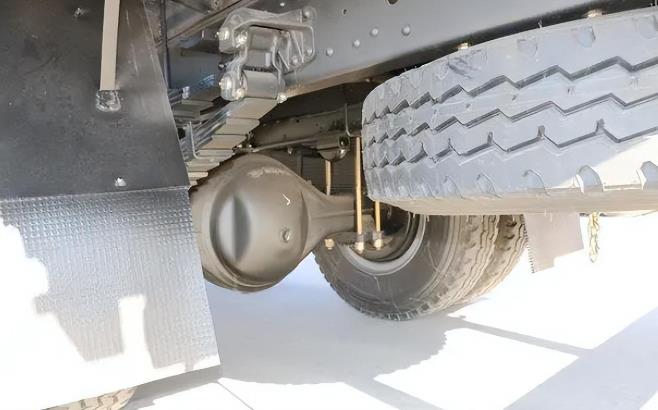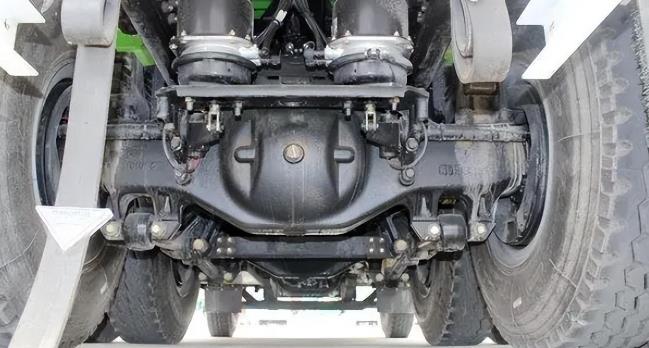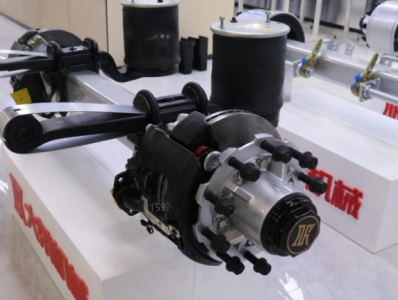What is the difference between a gear axle and a trailer axle?
From the classification point of view, the reduction shaft belongs to the drive shaft. It is composed of the main reducer, differential, half shaft, drive shaft housing and other components. It is at the end of the vehicle transmission system. Its function is to change the speed and torque of the transmission and transmit it Give the vehicle drive wheels. If it is a drive wheel with steering function, it will also be equipped with a constant velocity universal joint.
Usually the most common ones are single-stage reduction shafts and double-stage reduction shafts.
Single-stage reduction shaft, commonly known as "half shaft", some car owners also call it "big belly shaft". The single-stage reduction shaft is mainly composed of a driving bevel gear and a driven bevel gear, which are commonly known as angle teeth and basin teeth, like some common models 435, 440, 457, 459, 460, 469, etc., which actually refer to The size of the basin tooth diameter.

The structure of the single-stage reduction shaft is relatively simple, light in weight, and the failure rate is relatively low, and the maintenance is also simpler and more convenient. had an impact.
Under normal circumstances, the single-stage reduction shaft speed ratio is small and the speed is fast, which is relatively more suitable for roads with good road conditions and standard-load transportation, but it may not be competent for harsh transportation conditions.
The double-stage reduction shaft is commonly known as "wheel side shaft" or "wheel reduction shaft". On the basis of the single-stage reduction shaft, a set of reduction transmission is added on the wheel side. The torque is amplified by two stages before and after, and then transmitted to the wheel. The advantage in driving force is very obvious.
In addition, the shaft package of the double-stage reduction shaft is small, the distance from the ground is large, and the vehicle passing performance is good, so it is suitable for some off-road and low-speed and heavy-duty harsh working conditions, such as oil fields, construction sites, mines, off-road vehicles and military vehicles.
Of course, the double-stage reduction shaft is not perfect. Its disadvantages are that the structure is complex, the transmission efficiency is poor, and it consumes more fuel when running. In addition, the reducer on the wheel side undertakes a lot of torque-increasing work. The wheel end part is easy to cause a tire blowout accident and is not suitable for long-distance high-speed transportation.

Whether it is a single-stage reduction shaft or a double-stage reduction shaft, it needs to bear the vertical force, longitudinal force and lateral force acting between the road surface and the frame during use, as well as braking torque and reaction force. Providing driving force is the most important main performance. The trailer axle is different. From the perspective of classification, the trailer axle is a typical support axle, also called a driven axle. It does not have a driving or steering function, and its main function is to bear the weight of the vehicle body and cargo.
From a structural point of view, the trailer axle is much simpler, mainly composed of axle beams, wheel end components, camshaft assemblies, etc., and looks like a barbell in appearance. Its axle beam is integrated and runs between the two wheels, which is also to provide stronger load-bearing strength. In terms of braking methods, trailer axles are mainly divided into drum brakes and disc brakes, and small-tonnage trailer axles can also be made into electromagnetic brakes. From the style point of view, trailer axles can be divided into drum type, disc type, low flat type, concave type, three-line six-axis, etc., to match different vehicles and transportation conditions.







